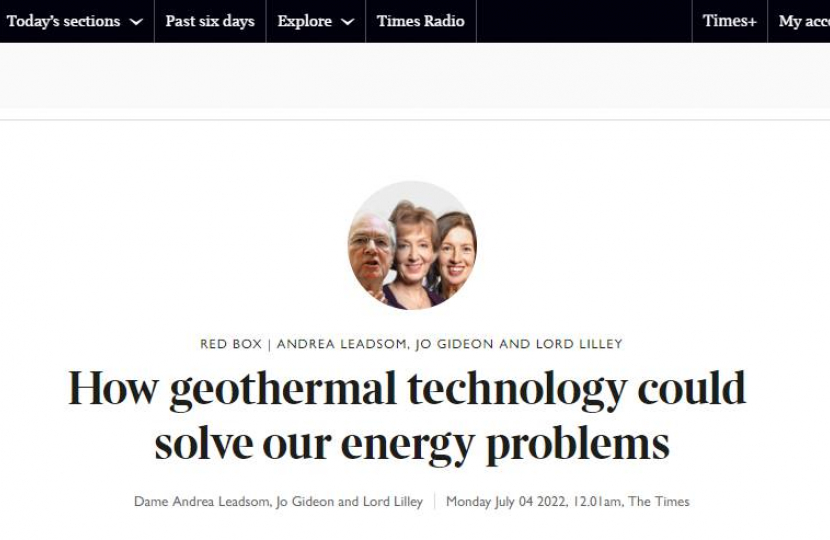
 The Times: How geothermal technology could solve our energy problems: https://www.thetimes.co.uk/.../how-geothermal-technology...
The Times: How geothermal technology could solve our energy problems: https://www.thetimes.co.uk/.../how-geothermal-technology... 
It’s what the experts call the energy trilemma, and it’s becoming more and more difficult to deal with. How can we do these three vital things: keep costs down for energy bill payers, keep the lights on and cut our emissions to net zero — all at the same time.
At a time when consumers and businesses face huge spikes in the cost of energy, it is tempting to forget about the third priority: the tricky area of how we can “decarbonise”, heat our homes and businesses.
But fortunately, there is an answer — one that will help reduce energy costs, keep the lights on and help save the planet.
More than that, it is an energy resource found in many areas right across the UK — crucially, including the “levelling-up” areas of the north, midlands, Wales and the south-west.
Conservative backbench MPs have launched a report on this win-win solution: harnessing the geothermal heat in water deposits lying under our feet in former coal mining areas that are found throughout these places.
We — members of the party’s backbench committee on business, energy and industrial strategy — urge the government to realise the potential and help provide the investment to release it.
Now, geothermal technology is not new. It is used across Europe, and two sites in County Durham and Gateshead are on track to heat thousands of homes.
But harnessed on a national scale, it could offer a superb new source of low carbon, reliable heat for homes and businesses.
Up to a quarter of UK homes sit above former coal mine workings.
Our red wall colleague and former coal miner Lee Anderson rightly sees it as a potential source of new jobs and growth in some of the poorest parts of our country.
This would bring these places full circle because this largely untapped energy is a legacy of the massive coalmining expansion which has contributed so much to global warming.
The hundreds of thousands of disused coal mines could become a core part of our low carbon future.
Here’s how it works.
Over the years since closure, water has seeped into almost every mine and is naturally warmed to between 12c and 20c by the natural heat of the Earth’s subsurface.
By drilling well shafts into the mine workings, the warm water can be extracted, and put through a heat exchanger, a device which transfers that heat to the water in a pipe network.
This network can then be used to heat anything from polytunnels to warehouses to heat networks within new housing developments.
Of course, water at 12c or even 20c is not enough for your hot bath or radiators.
But in new housing estates, for example, heat pumps would be used to boost the temperature.
And heating water already warm will be a lot cheaper than doing it from a standing start.
Mine water heat isn’t the only resource under our feet. Drilling even just a few kilometres further down you can unlock the deep heat of the Earth where temperatures can reach as high as 150c. We have two of these so called “deep geothermal” plants about to come online in Cornwall, and our colleague Kieran Mullan will soon be publishing a list of other high potential sites. But again, we are lagging far behind Europe. As with heat from mine water, this could be used to heat a new housing development, a factory setting or other businesses and in places with the highest temperatures, even electricity for the grid.
Boris Johnson’s government has already made clear its commitment to an ambitious levelling-up agenda.
Our report will show how a pro-active policy towards low carbon heating sources and geothermal technology will help achieve just that.
If nothing else, we should be harnessing this extraordinary legacy of coal mining communities and our geological heritage right across the UK.
Dame Andrea Leadsom, Jo Gideon and Lord Lilley are members of the Conservative backbench committee on business, energy and industrial strategy.
